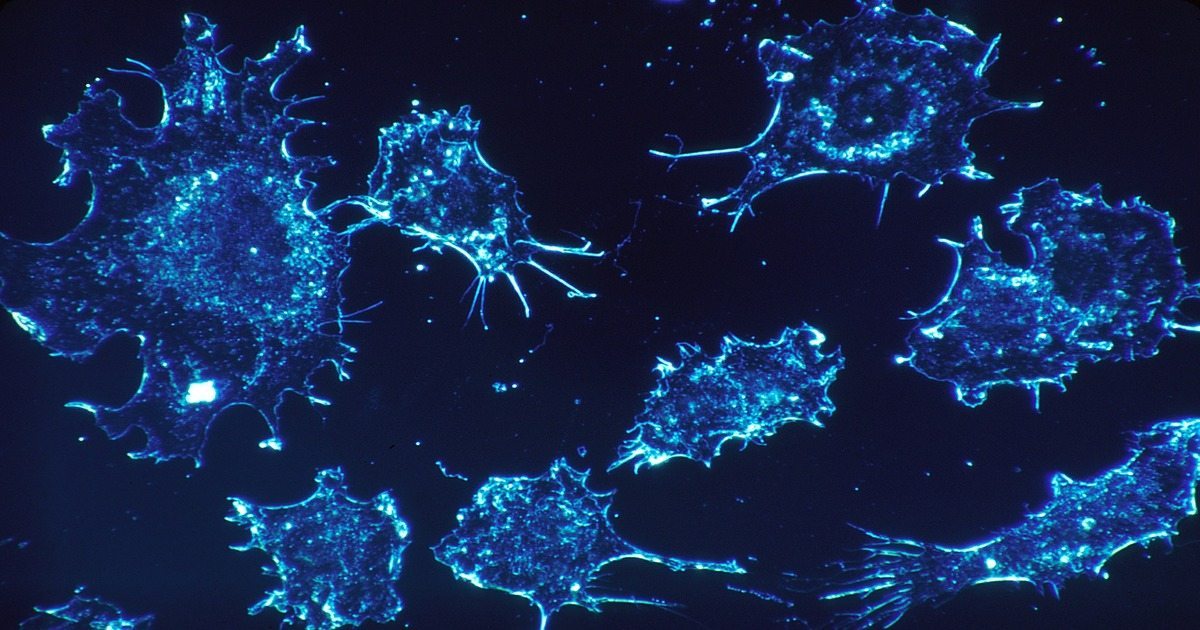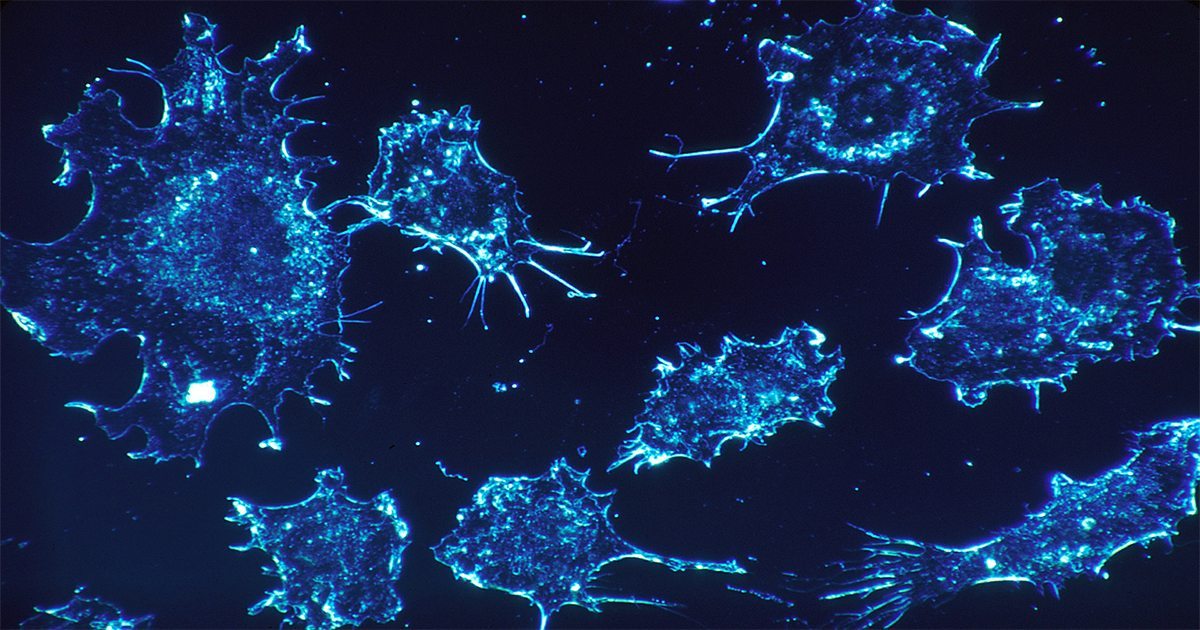Category: Featured News

Mesothelioma Growth May be Slowed by Blocking Glutamine Pathway
Glutamine, an amino acid and one of the primary building blocks for proteins, is vital for providing fuel to cells throughout the body. However, researchers now believe glutamine can also fuel cancer growth and they are targeting it to develop anti-cancer drugs that may someday be used to fight mesothelioma.
Mesothelioma is a rare, incurable cancer that is caused by breathing in, or ingesting, asbestos fibers. Although chemotherapy is the number one treatment modality, nearly every patient builds up resistance to the drug. In fact, according to researchers from the Research School of Biology, The Australian National University, there are 917 different types of cancer, “and many cures work only for a single type of the disease or become ineffective as cancers develop resistance to chemotherapy.”
For that reason, and to try to develop a drug with much less serious side-effects than standard chemotherapy, the researchers looked at glutamine that is a “very common mechanism in cancer cells.” The researchers decided to focus on the “glutomainolysis pathway” to prevent the glutamine from getting to the cancer cells, thus inhibiting the cancer’s growth.
After first attempting to genetically alter cancer cells, which was ineffective, the team found a way to disable the gateway. They were able to turn off “the biochemical alarm” and successfully blocked gateways through which the cancer cells obtained glutamine. In effect, by cutting off the cancer cells fuel supply they starved the cancer cells. This resulted in a 96 percent reduction in the cancer cells’ growth.
“It is an exciting time to do cancer research,” said lead author Angelika Bröer, from ANU Research School of Biology. “We now have precision tools in our hands to manipulate the genome of cancer cells, allowing us to address problems that were difficult to solve previously.”
First, though, they must turn their attention to finding anti-cancer drugs that will block the glutamine pathways and kill off the cancer. They plan to do this using tests they have developed that will use robots to “test tens of thousands of drugs for us over the next year or two.”
By focusing on pathways that can cut off growth of cancer cells, researchers bring hope to the mesothelioma community that a new, effective treatment is on the horizon. Nearly 3,000 Americans are diagnosed each year with the terminal cancer.
For more information on the study, see the April 26 issue of Journal of Biological Chemistry.
Sources :
- The Australian National University
http://www.anu.edu.au/news/all-news/starving-cancer-the-key-to-new-treatments - April 26 issue of Journal of Biological Chemistry
http://www.jbc.org/content/early/2016/04/26/jbc.M115.700534.full.pdf+html

“Exciting” Results in Study of EGFR-Targeting Drug
In November, Mesothelioma Help reported the U.S. Food and Drug Administration granted accelerated approval for the anti-cancer drug Tagrisso (osimertinib) for lung cancer. This approval opened the door for another mesothelioma treatment as well. Now, researchers report exciting results from a study looking at osimertinib as first-line therapy for epidermal growth factor receptor (EGFR) mutation positive lung cancer patients.
The news of this drug is exciting for several reasons, but primarily for the fact that it demonstrated progression-free survival in first-line therapy. Typically, nearly 50 to 60% of lung cancer patients who experience disease progression after being treated with an EGFR inhibitor often develop the T790M resistance mutation. However, many of the patients in the study “have not had disease progression on the study and are still benefitting from treatment,” according to the researchers.
“The overall response rate was among the best reported for first-line therapy of EGFR-mutated NSCLC,” said Suresh Ramalingam, MD, professor of hematology and medical oncology at Emory School of Medicine and deputy director of the Winship Cancer Institute in Atlanta, in an April 15 press release announcing the findings. “The progression-free survival results are exciting, well exceeding the historical control rates of 10 to 13 months with first- or second-generation drugs.”
In the study of 60 patients with EGFR mutatated non-small cell lung cancer, who received osimertinib without having undergone any other treatment, the overall response rate was 77%. In addition, the patients who did have disease progression did not have T790M mutation, leading Ramalingam to suggest the drug is “changing the biology of the disease.”
In a second study, patients realized nearly the same response rate, 71% in this study, in EGFR-mutated/T790M positive lung cancer patients who had progressed on previous EGFR TKI therapy.
EGFR is a protein found on the surface of some cells to which epidermal growth factor binds, which causes the cells to divide and spread. According to a 2009 article in Current Drug Targets, EGFR overexpression has been shown in more than 50% of pleural mesothelioma patients, and approximately 15% of patients with lung cancer in the U.S. express EGFR mutations. T790M is a genetic mutation responsible for EGFR-TKI treatment resistance. Osimertinib inhibits both EGFR and T790M, according to AstraZeneca, the maker of the drug.
Next, researchers will conduct a phase III clinical trial with approximately 500 patients comparing osimertinib to either erlotinib or gefitinib for front-line therapy. Erlotinib and gefitinib are kinase inhibitors used to treat mesothelioma and lung cancer. According to the press release, results are expected within 18 months.
The information was presented by Suresh Ramalingam, MD, professor of hematology and medical oncology at Emory School of Medicine and deputy director of the Winship Cancer Institute in Atlanta, at the European Lung Cancer Conference 2016 in Geneva.
http://www.esmo.org/Conferences/Past-Conferences/ELCC-2016-Lung-Cancer/News-Press-Releases/Osimertinib-Given-as-First-line-Treatment-May-Alter-Biology-of-EGFR-Mutated-Non-Small-Cell-Lung-Cancer

Mesothelioma Patients to Benefit from Research Confirming Portrazza Improves Survival in EGFR-Expressed Lung Cancer
In December, Mesothelioma Help reported the U.S. Food and Drug Administration approved Portrazza (necitumumab) for first-line treatment of people with metastatic squamous non-small cell lung cancer. Now, researchers confirm necitumumab is most Beneficial to Lung Cancer Patients expressing epidermal growth factor receptor (EGFR).
EGFR is a protein found on the surface of some cells to which epidermal growth factor binds, which causes the cells to divide and spread. It is found at abnormally high levels on the surface of many types of cancer cells, including more than 50% of pleural mesothelioma patients, and approximately 15% of lung cancer in the U.S. Necitumumab blocks the activity of EGFR.
In a report presented April 15 at the European Lung Cancer Conference in Geneva, Switzerland researchers analyzed the results of the SQUIRE Phase 3 clinical trial, designed to determine if necitumumab given in combination with cisplatin and gemcitabine will be more effective than the chemotherapy combination alone. The researchers report the addition of necitumumab to the combination chemotherapy improved overall survival and progression free survival by 21%, over patients who did not receive necitumamab.
The SQUIRE clinical trial did not pre-select patients based on whether they expressed the protein. The researchers, however, drilled in on the subpopulation of patients in the trial, and found that of the 982 patients in the trial, 95% expressed EGFR tumors and just 5% had no EGFR protein. They report that there was no benefit to the necitumumab/cisplatin/gemcitabine combination for patients with negative-EGFR tumors.
“Necitumumab is targeted at EGFR so it makes sense that the drug is active in patients with the receptor,” said Dr. Luis Paz-Ares, Chief of medical oncology at the University Hospital 12 De Octubre in Madrid, Spain, lead author. He added, “the drug had no effect when the receptor was absent, presumably because there was no target to bind to.”
Necitumumab is prescribed in combination with the chemotherapy drugs gemcitabine and cisplatin for the initial treatment of squamous NSCLC that has metastasized. Mesothelioma patients are also candidates for the drug as the cancer is often treated with the preferred chemotherapy combination of gemcitabine and cisplatin.
Within the standard framework of cancer treatments, chemotherapy is considered the most effective single modality for the treatment of mesothelioma and is likely to be the most commonly deployed treatment as well. However, mesothelioma is a highly aggressive cancer and often fights off the effects of chemotherapy. Finding a way to increase the efficacy of the drugs brings hope to mesothelioma patients.
“Based on this analysis, the European Medicines Agency has decided that necitumumab is approved only for patients with EGFR expressing tumours,” said Dr. Luis Paz-Ares.
The FDA did not limit its approval to EGFR-positive patients. Necitumumab was approved in November by the FDA for use in non-small cell lung cancer regardless of the presence of biomarkers. The approval opened up another treatment option for mesothelioma patients.
The researchers report additional research and analysis will be conducted with necitumumab and patient populations.
See ClinicalTrials.gov for information about the SQUIRE clinical trial.
Sources :
- European Lung Cancer Conference
http://www.esmo.org/Conferences/Past-Conferences/ELCC-2016-Lung-Cancer/News-Press-Releases/Patients-with-EGFR-Expressing-Non-Small-Cell-Lung-Cancer-Benefit-Most-from-Necitumumab-Added-to-Chemotherapy - SQUIRE clinical trial
https://clinicaltrials.gov/ct2/show/NCT00981058?term=SQUIRE&rank=2

Light Therapy May Ease Fatigue, Depression in Mesothelioma Patients
When being treated for mesothelioma, patients are often faced with a myriad of side effects that come along with the benefits of the cancer-fighting medicines. Fatigue, insomnia, and depression are some of the effects that often linger even after treatments are complete. Now, researchers report that light therapy may help to ease these side effects for some cancer survivors.
In a clinical trial being conducted by researchers at Icahn School of Medicine at Mount Sinai, the researchers are trying to determine whether regular exposure to “bright white light” can help reduce fatigue and depression in cancer patients, according to an April 11 Wall Street Journal article.
“We know that cancer patients are light-deprived,” says William Redd, a Mount Sinai psychologist and professor of medicine and a lead researcher in the trial. “You feel lousy, you stay at home, you feel even worse.” However, light therapy, he says, “has had a major impact on cancer patients with fatigue and depression.”
The National Cancer Institute estimates that 33% of all cancer survivors deal with significant emotional distress, including depression. Patients treated for mesothelioma, a terminal asbestos-caused cancer, are faced with limited treatment options and use of highly toxic doses of drugs that leave them both physically and emotionally drained. Helping to ease this stress and feelings of overwhelm can bring patients a better quality of life.
While light therapy, often called systematic light exposure, has been used for another form of depression, SAD or seasonal affective disorder, brought on by the absence of sunlight, this study is the first to assess the effects on cancer patients.
In the clinical trial, those patients who were exposed to the white light “had significant improvements in relieving symptoms of depression” compared to the group who were exposed to a dim red light. Those in the red-light group, in fact, saw no difference in their condition.
Although the researchers are still trying to uncover the reason of why the white light is effective, they believe it affects the patients’ circadian rhythms, known to influence sleep patterns and mood. According to the researchers, cancer patients often have disrupted circadian rhythms.
Like every treatment, not everyone will benefit, particularly patients with severe depression, and patients may still need some traditional medication. However, Sonia Ancoli-Israel, a professor emeritus at the University of California, San Diego who is working with the Mount Sinai team, says that the light therapy does offer “the potential to improve quality of life in cancer patients.”
Next, Mt. Sinai and Memorial Sloan Kettering Cancer Center will combine resources in a five-year study of light therapy that will focus on fatigue, depression, sleep problems, and circadian rhythms in cancer patients. Funded by a $3.4 million grant from the National Cancer Institute, the researchers hope to recruit 200 cancer patients.
“There is medication, there is cognitive behavior therapy, but this is so simple,” says Katherine DuHamel, the Sloan Kettering psychologist involved in the study.
Mesothelioma is a serious cancer that occurs in individuals exposed to airborne asbestos fibers. The disease is highly aggressive and is resistant to many standard cancer treatments making it a difficult disease to treat effectively. While many factors determine survival for a patient, such as treatment plan, age, overall health and fitness of the patient and the extent of the disease, physicians also believe that a positive outlook can result in the improvement in a mesothelioma patient’s health.
Photo Credit: Kalfatermann

Metabolic Pathways, Key to Understand Mesothelioma Metastasis
The science behind understanding how mesothelioma cells continue to divide and spread despite being inundated with toxic treatments has confounded researchers for years. If cancer metastasis can be halted, patient survival will be improved. Now, researchers report they have uncovered a unique link between cancer pathways that leads to uncontrolled growth.
Researchers at Children’s Medical Center Research Institute at UT Southwestern (CRI), led by Dr. Ralph DeBerardinis, Associate Professor of CRI and Pediatrics, Director of CRI’s Genetic and Metabolic Disease Program, and Chief of the Division of Pediatric Genetics and Metabolism, found that two distinct metabolic cancer pathways are linked in such a way that cells adapt to the stress of cancer growth.
The researchers had a hunch that by focusing on “tumor-specific metabolic pathways” they could uncover a new, effective way to treat cancer. Building on previous findings by Dr. DeBarardinis, the team found cancer cells take advantage of the pentose phosphate pathway (PPP) and the Krebs cycle pathways to successfully fight off toxins.
In short, cells typically grow by “attaching to nutrient-rich tissue called a matrix,” according to the study, in order to manage growth and survival. When they detach, however, the cells perish. Not so for the cancer cells, though, say the researchers. Apparently, cancer cells have found a way to work around the process.
“We knew that both the PPP and Krebs cycle provide metabolic benefits to cancer cells,” said Dr. Ralph DeBerardinis in an April 6 press release announcing the findings. “But we had no idea that they were linked in this unusual fashion.”
According to various studies, metastasis is the cause of nearly 90 percent of cancer deaths. Halting tumor growth and preventing metastasis in cancers, especially mesothelioma which is highly aggressive and is resistant to many cancer treatments, is critical for increasing survival in patients. This research offers hope to mesothelioma and lung cancer patients that slowing or halting tumor growth is possible.
The researchers note that the study was conducted in a lab with cultured cell models. The next step is further research on living organisms.
“We are particularly excited to test whether this pathway is required for metastasis, because cancer cells need to survive in a matrix-detached state in the circulation in order to metastasize,” said Dr. DeBarardinis.
See the full report in the April 6 issue of Nature.
Know more about Mesothelioma and how you can deal with it.

Free Mesothelioma Patient & Treatment Guide
We’d like to offer you our in-depth guide, “A Patient’s Guide to Mesothelioma,” absolutely free of charge.
It contains a wealth of information and resources to help you better understand the condition, choose (and afford) appropriate treatment, and exercise your legal right to compensation.
Download Now